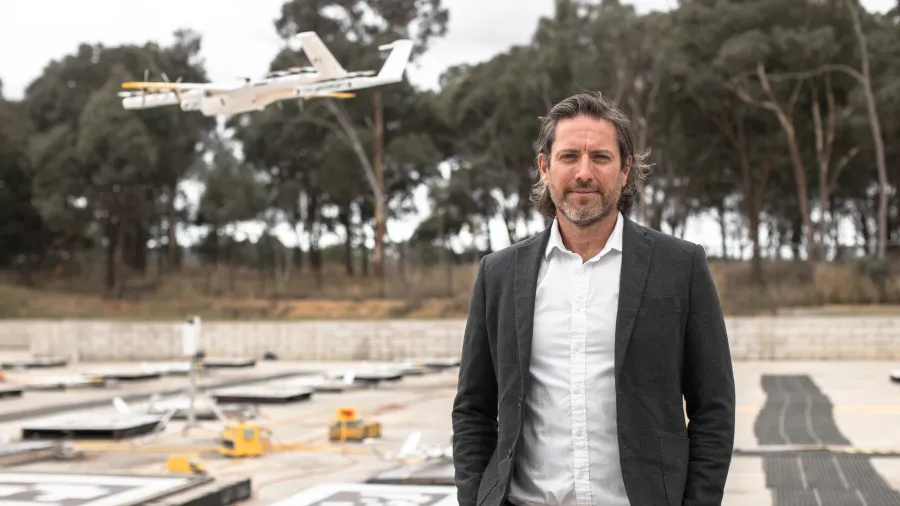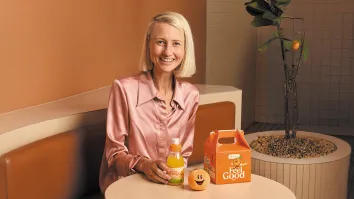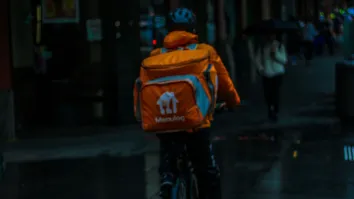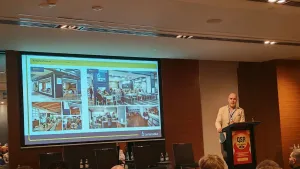
Australia’s next coffee craving could be delivered by drone
A recent trial estimates that drones could make deliveries in less than 15 minutes.
Your next coffee order could be delivered by drone, Simon Rossi, General Manager at Wing Australia said in an exclusive interview with QSR Media
Simon explained that what’s attractive about drone delivery is the way it can significantly reduce delivery times. In 2022, Wing partnered with on-demand delivery leader DoorDash to make Wing’s drone delivery service accessible via their app.
Selected customers in Logan were able to use the app to buy snacks, pantry staples, grocery items, and even household essentials and have them delivered in 15 minutes or less. The trial served a service area of roughly 100,000 people, with a maximum of 1,000 deliveries per day or about one delivery every 25 seconds.
“We see this new functionality as a logical step on our journey to make drone delivery a plug-and-play option for more businesses and consumers – no matter what delivery app they use. Wing’s drone delivery services are currently being used to bring items around or under 1kg to households and workplaces, which includes various food items, such as banh mi and sushi, to grocery and convenience items, such as bread, fresh produce, snacks, and meals. ” Simon said.
“Additionally, Wing’s AutoLoader can make it possible for our delivery drones to pick up recently prepared food from restaurants, essentially performing takeaway on behalf of the customer. The AutoLoader includes a spot where store employees can latch packages without waiting for the drone to arrive. Once the system confirms a package has been dropped off, a drone is dispatched to pick it up and then deliver it to the customer,” Simon explained.
Drones and on-ground delivery
With drones reaching this level of advancement, will on-ground deliveries become obsolete?
Simon says no.
“Drone delivery won’t completely replace ground delivery–we see them working together–drone delivery can be a very effective way to deliver food in multi-modal delivery environments,” Simon said.
In 2021, Wing teamed up with Australian retail property group Vicinity Centres to trial a model of co-locating drone delivery hubs at popular shopping spots. This has been proven a success, with merchants increasing the delivery speed of small items, and expanding their reach to different customer segments.
How the Wing Delivery Network works is it is an automated system that was developed to support high-volume drone delivery across a major metro area. Wing drones will autonomously be able to pick up, drop off, travel, and charge in whatever pattern makes the most sense for the entire system. This is a change from the current model as this will allow the drones to continue deliveries throughout an entire day, without ever returning to their point of origin. The network will also constantly optimise itself to meet peaks in consumer demand across entire cities.
Food safety and tracking
Wing’s system has multiple levels of redundancy built into its operations, including real-time systems that conduct health and safety checks on drones and qualified pilots who oversee operations.
In its Australian operations, the Civil Aviation Safety Authority (CASA) has rigorously reviewed the safety of Wing’s aircraft, personnel and operations and all operations can only be undertaken with CASA’s approval.
In terms of food safety, Wing and its partners follow safe food handling requirements when packing goods into our designated packaging. Current processes ensure no human contact with the item in the delivery box once it is closed and placed on a hovering drone’s tether.
The drone then climbs to a cruise height on average of about 45 metres above ground, flying to the designated delivery destination in several minutes. Once at the customer's destination, the drone slows down, hovers, descends to a delivery height of 7 metres above ground, and then lowers the tether and automatically releases the package in the desired delivery area.
“There is no need to unclip or assist with the delivery of the package. The drone then climbs back to cruise height and returns to the site of origin. Depending on the service they are using, customers can track their delivery live in the DoorDash or Wing app, and they know the exact minute the package will arrive,” Simon explained.
Benefits
Aside from cutting down delivery time, drones could potentially cut down costs by up to $800m per year by the end of the decade, according to a report by AlphaBeta
“Drone delivery also expands Australian food retailers’ reach by up to four times as many consumers by bringing more households into the delivery range, potentially saving 180-200 million hours spent by consumers on pick-up journeys, and providing delivery times that are 60 to 70% faster than current methods. The increased reach and time savings that drone delivery enable were the basis for AlphaBeta’s expectation that it could grow Australian retail sales by $2.2b by 2030,” Simon said.
Additionally, putting drones in the air also means having fewer cars on the road. The report also found that drone delivery will reduce carbon dioxide emissions in Australia by 500-550,000 tonnes due to fewer motor vehicle trips, equivalent to the carbon storage of over 16-18 million trees.
Future of drone delivery
The use of drones in the fast-food industry could become the norm by 2040, with Deloitte expecting food deliveries via drones in Australia to reach 65 million trips.
Simon said the demand could be likely due to two key factors. “Firstly, drones can help food retailers reach more customers. According to a report by AlphaBeta, in many situations, drones can fly and deliver a package for 10km in less time than it takes for a car to drive 5km, effectively doubling the market that food retailers can reach. Secondly, drones reduce delivery costs - according to another AlphaBeta report, the technology is expected to decrease up to 80 to 90 per cent of delivery costs in the long term.”
In the next 12 to 24 months, Simon expects drone delivery to move out of its early adopter phase and become more commonplace in large metro areas and available to more businesses.
“Delivery drones can typically deliver food items very quickly after they are prepared, meaning they stay fresh, hot or cold. We believe this will make drone delivery attractive to restaurants that might have relied less on other kinds of delivery. As drone delivery becomes more commonplace, we expect many products to become available for delivery that might have previously only been available in restaurants or stores,” Simon said.























